Forgive me if I sound biased, but the Monstera obliqua is hands-down one of my favorite varieties in the Monstera genus. This breath-taking beauty embraces negative space in a way that rivals only great works of art. And if you’re wondering what I’m on about, it’s the fact that the leaves of the obliqua are almost more holes than plant tissue.
With its all-encompassing fenestrations, the rare Monstera obliqua can be intimidating to care for and is a task usually only undertaken by collectors genuinely passionate about their craft. That being said, there is something so special about this plant that it deserves to exist in the realm of the home jungle, which is why I’ve developed this care guide.
If you’ve landed yourself a Monstera obliqua – or are keen on acquiring a specialized one, like the Monstera obliqua Peru or in its Bolivian form – you’ve come to the right place. This article will take you through everything you need to know about caring for this gorgeous specimen, from its growing environment requirements to how fast you can expect it to grow. Buckle in. Let’s talk obliqua.
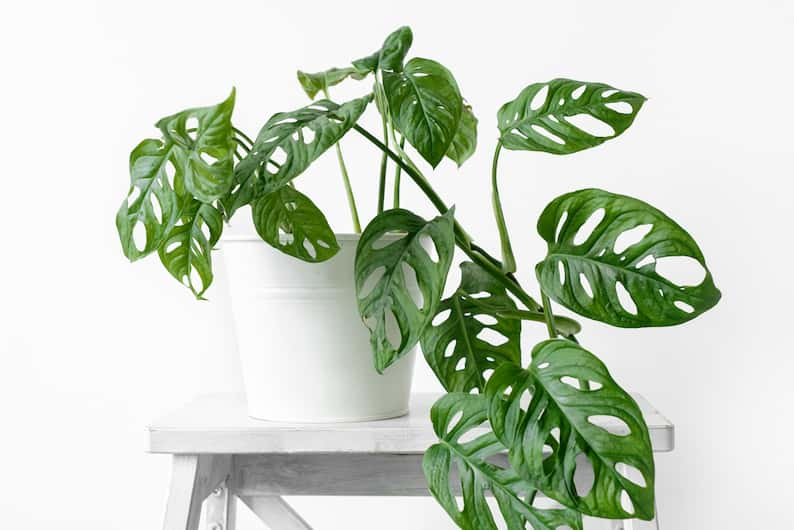
Table of Contents
How do you care for Monstera obliqua?
A Monstera obliqua’s leaves are extremely thin and delicate, and for this reason, it requires special care and optimal growing conditions. Most important is always ensuring that it has adequate humidity and receives bright, indirect light. An obliqua also needs good-quality, well-draining, but moisture-retaining soil.
If you’ve already done a little research into the Monstera obliqua, you’ll know they’re not recommended for the faint-hearted. Unlike their sturdier, hardier cousins like the Deliciosa, this plant is quickly and deeply affected by inadequate growing conditions. They’ll wilt at the drop of a hat.
Nevertheless, if you can provide a stable environment for this beauty, there is absolutely no reason you can’t grow it with much success. There are some considerations to keep in mind, of course, but for the most part, careful monitoring of its needs is all you need to see this plant thrive.
Let’s look at how to care for a Monstera obliqua in detail.
1. Aroid, peaty, well-draining soil
Set your obliqua up for success by ensuring your fundamentals are correct. And by this, I mean make sure your Monstera is potted in good-quality soil. Obliqua’s have delicate root systems that can be easily crushed by cloggy, dense earth, so an aroid mix is better.
Together with this, they also require a rich source of nutrients, which can be provided by including peat, moss, or bark in your soil mix. Chunkier bits in your planter make for better air circulation, which helps to prevent fungal and bacterial infections.
In terms of the pH level of your soil, try to keep it on the acidic side, at around 5, but not so acidic that your obliqua starts to wilt. If you’re unsure, err closer to a neutral 7.5.
FYI: You can see the ideal soil type to achieve the right level of pH for your obliqua in our article on the best soil for Monstera.
2. Consistent but careful watering
All Monstera are tropical plants, which means they like a lot of water. The obliqua shares this characteristic but does need a little more monitoring than most. The last thing you want is for this delicate beauty to end up with root rot. My best advice is to invest in a moisture meter.
As a general rule of thumb when it comes to how often to water your Monstera obliqua, you can water an obliqua once or twice per week during the hot months and every ten days to two weeks in winter. But of course, it’s better to keep an eye on the soil, as hard and fast rules with watering can be dangerous.
In short, always test the moisture levels of your Monstera with your fingertip or meter before adding water. Allowing the top layer of soil to dry out between watering sessions is ideal.
3. Bright, plentiful, but indirect light
The obliqua does not have a lot of surface area on its leaves to absorb light, which means that it needs as much of it as possible to grow and thrive. These special types of Monstera require a full six to eight hours per day in a spot where they are not likely to burn or scorch.
Ideally, you want your obliqua close to a bright but indirect light-receiving window set a few feet back. The morning sun is better for this plant, as afternoon rays tend to be too harsh. So, if you can, opt for east or south-facing windows.
For the first few weeks after getting your obliqua, it’s a good idea to monitor its reaction to its environment. If you’re not meeting your Monstera’s light requirements, you may notice it start to wilt or that your Monstera’s leaves start turning yellow. On the other hand, if it’s getting too much light, your plant may curl and become dry, so it helps to keep an eye on it for either possibility.
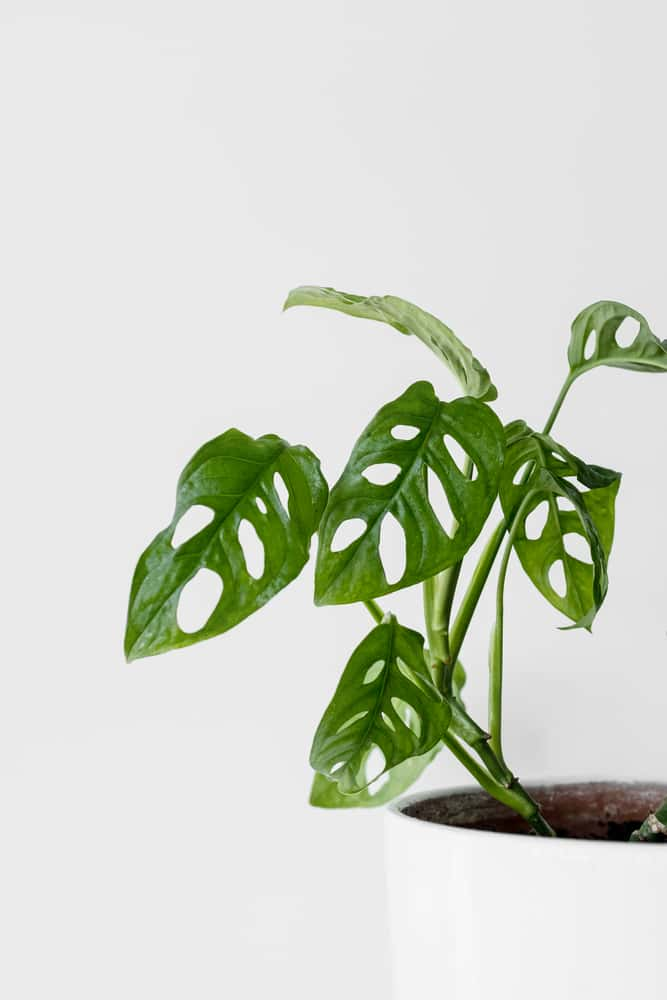
4. Moderate to warm temperatures with sunny highs
As previously mentioned, the Monstera obliqua is native to a jungle environment, so it follows that it prefers warmer climates. Indoors, it requires a minimum of 60F to 70F (16C to 21C) to flourish. If your home environment is on the cooler side, don’t despair. Much of this concern can be alleviated by ensuring your obliqua is placed in a prime spot.
Keeping your Monstera near a sunny window is best, as it will absorb the warmth of the sunlight. Indeed, of greater importance is ensuring your obliqua receives adequate humidity, which we’ll discuss in the sections below.
5. Obliqua on a balanced diet
We know by now that the Monstera obliqua is a mild-mannered specimen that needs to be treated a little more gently than its counterparts in the Monstera genus. This includes its feeding habits. While fertilizing Monstera is encouraged, it should be done very sparingly with this particularly delicate gem.
For the most part, if your obliqua seems to be in good health and the pH level of your soil is adequate , there is little reason to feed it at all. If you notice your Monstera is drooping and looks a little on the dreary side in need of a boost, a small dose of organic, slow-release fertilizer should suffice.
Try not to feed it during winter, but instead stick to its warmer growing months in the spring and summer.
6. Humidity is critical
Perhaps the most vital part of a Monstera obliqua’s care is ensuring it has sufficient humidity. Your Monstera’s leaves will curl, dry out or wilt, and your plant can even perish without it. In other words, keeping this skeleton-like plant’s limited leaf area moist is crucial.
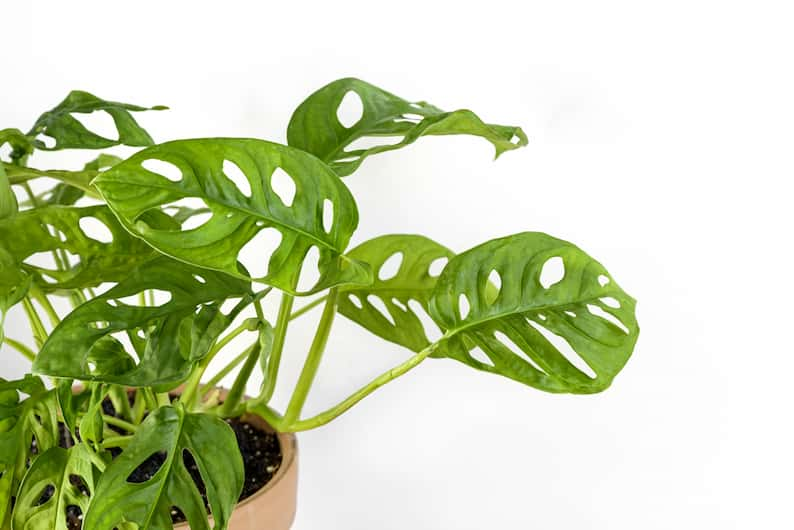
Ideally, you would be able to provide it with an environment with roughly 60% to 80% humidity. Still, if this is not possible, you may be able to supplement the moisture in the air with regular misting, a plug-in humidifier, and the presence of many other plants.
Make sure to keep it away from artificial heat, air conditioners, or drafty doors and windows. As an additional measure, you may also want to add a moist pebble tray beneath your Monstera for derivative moisture.
Find out more: 12 Proven Tips to Get Your Monstera the Humidity It Needs
What is the difference between Monstera obliqua and Monstera adansonii?
The main difference between Monstera obliqua and Monstera adansonii is in the texture of their leaves. The adansonii has a firm, almost leathery texture and large, roundish holes, while the obliqua is extremely delicate with holes that make up most of its leaves’ surface area.
In fact, you wouldn’t be mistaken for wondering how the Monstera obliqua Peru’s leaves even exist, with them often presenting as if they are held together by grace alone!
But it’s true that the differences between the Monstera adansonii vs obliqua aren’t always obvious. The two are often confused due to their similar appearances. However, as mentioned, there are some crucial differences between the two, particularly regarding their texture and the size of their fenestrations.
Telling these two beauties apart when they are young is almost impossible, which is perhaps where most of their identity confusion comes in. For those familiar with the obliqua, they’ll tell you that a genuine sighting of this magical plant seldom happens, and you’ve likely found yourself with a juvenile adansonii.
Further setting these two magnificent Monstera apart is their availability. In the battle of Monstera adansonii vs obliqua, there’s no question about which is more in demand. The Monstera adansonii can be found quite easily online, in garden centers, and in nurseries, whereas the obliqua is exceptionally rare and usually needs to be purchased from specialist suppliers.
Other differences between the adansonii and the obliqua include their growth rate (the obliqua is slow to produce new leaves for a Monstera) and their prevalence in the wild. It is believed that there have only ever been a few hundred sightings of the obliqua in the wild, although this cannot be verified.
Why is Monstera obliqua so rare?
The Monstera obliqua is among the rarest in its genus, and this is mainly because it grows very slowly. For breeders and buyers, it takes quite a few years for the obliqua to grow into its signature fenestration, looking much like an adansonii before this. These plants also require special care.
The obliqua is not a Monstera you’re likely to stumble across perchance. There are very few breeders, and if you do happen to find one, you’re likely going to end up paying quite a hefty price. In fact, even a juvenile Monstera obliqua is bound to rake in four-figure sums.
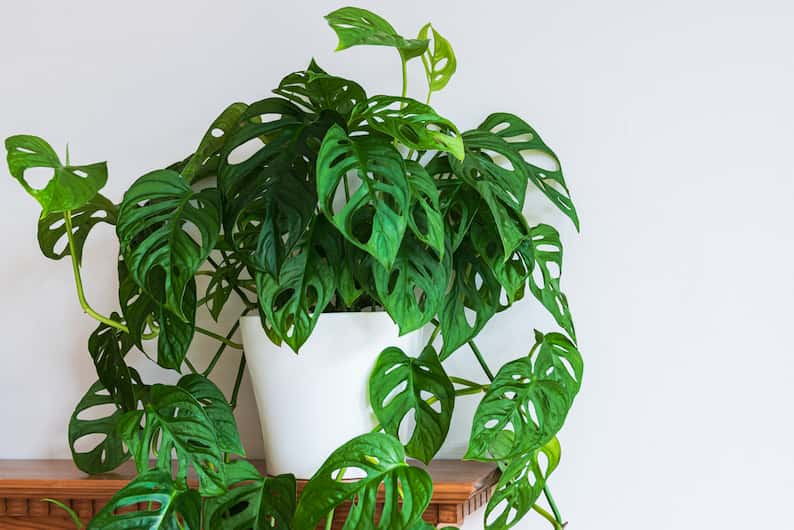
Another reason for their rarity is (to put it bluntly) because they’re pretty difficult to look after. These beauties need exact conditions to grow and thrive and are inclined to wilt at the first sign of distress. That being said, once you’re set-up, you should have no trouble keeping your obliqua alive.
If you are convinced that it’s time to purchase an obliqua, do be warned that there are plenty of scammers out there that pass off juvenile adansonii as obliqua. Conduct proper research to find a reliable supplier, and where possible, ask to see the parent plant, especially if you’re buying a cutting.
How much does a Monstera obliqua cost?
A genuine Monstera obliqua does not come cheap. For a stem with nodes, you can expect to pay upwards of $200, with no guarantee that it will take. For a juvenile Monstera obliqua, you’re looking at a starting price of $7,000.
And for those with a little extra to spend, a large Monstera obliqua once went for a jaw-dropping and record-breaking $23,000 in an online bid.
When shopping for your cutting or plant and you come across a Monstera plant price seemingly too reasonable to be true, it probably is, so be wary.
Does Monstera obliqua climb?
As a juvenile, the Monstera obliqua is a bushy, compact plant. However, as it matures in its natural habitat, it may start to climb up trees and other plants to reach for the sun through the canopy above it. Its fenestrations allow water to flow through its leaves, keeping it safe from drowning.
Almost all Monstera have the ability to climb, as Monsteras tend to grow aerial roots to use specifically for this purpose. Monstera obliqua in the wild use the trees around them to climb towards the sun, where they can absorb its energy to grow and thrive.
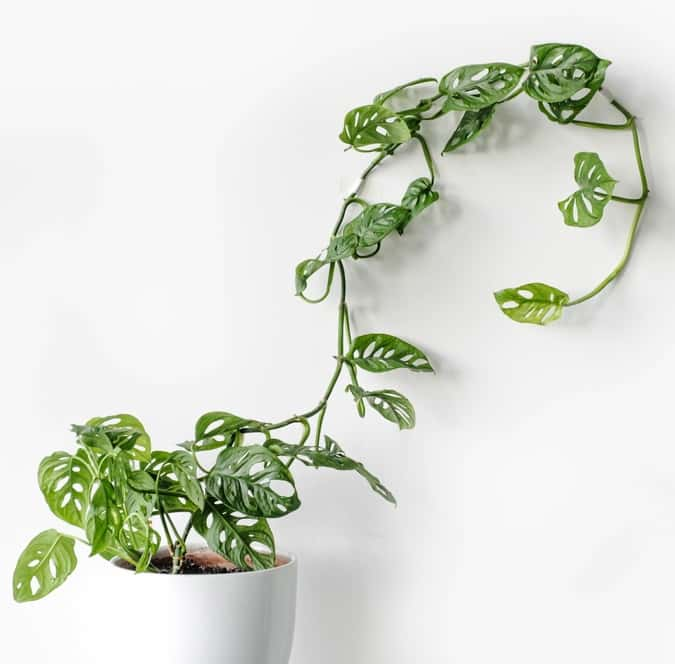
You can train to climb a Monstera obliqua grown in the home, provided they are given adequate support. Gently attaching their stems to a moss pole for your Monstera with florist tape (or very loosely with twine) is an excellent way to start them on their climbing journey.
Of course, you’ll need to practice plenty of patience, as these rare and special specimens are very slow to grow. Ultimately, you may have to wait months before the aerial roots attach.
Can you find Monstera obliqua in the wild?
The Monstera obliqua is native to the jungle regions of Central and South America, and while it is only rarely seen in the wild, it can be found and does grow there. Rumor has it that this plant has only been seen 17 times in the wild, but in truth, it has been spotted and collected on hundreds of occasions.
Logically, the Monster obliqua must be found in the wild because it had to have come from somewhere. That being said, it is improbable that you would stumble across one while waltzing through a South American jungle, as they are scarce, even in their natural spaces.
Together with this, there are also different types of Monstera obliqua, which differ quite drastically in the size of their fenestrations. The most infrequently sighted is the Monstera obliqua Peru, the famously fenestrated genus most commonly associated with the Monster obliqua species.
The Monstera obliqua in its Bolivian form is almost just as rare but is easy to overlook as it has hardly any apertures when it is young.
What’s the Monstera obliqua Peru?
The Monstera obliqua Peru is the type of obliqua that most people think of when they hear its name. That is, it’s the most well known Monstera obliqua with the heavy fenestrations, or large holes, that this type of plant is famous for.
You’re also most likely to be buying a Monstera obliqua Peru if you see an obliqua for sale anywhere. The fact it’s more widely available than others doesn’t mean it’s not rare, as the Monstera obliqua Peru is still extremely hard to come by.
But as it’s the most in-demand due to the unique look that its large holes offer, the Monstera obliqua Peru is, relative to the others, more available. Just don’t expect to get one at your local garden center, as you’ll still need to find a specialty grower who knows how to care of this unique houseplant, let alone offers Monstera obliqua Peru for sale.
Did you know… the Monstera obliqua Peru is actually a completely separate plant from the Monstera Peru? Take a look at our article to find out more about this member of the Monstera family!
How fast does Monstera obliqua grow?
As a general rule, the Monstera obliqua does not grow fast at all, particularly if its growing conditions are not ideal. In the wild, it may expand by two to five meters a year, but in a domestic environment, you’re unlikely to see it grow by more than a foot or two (30 to 60 centimeters).
If you’re in the market for instant growth gratification, the Monstera obliqua is not the plant for you. This plant is a famously slow grower and only thrives in perfectly ideal conditions.
Of course, this is not to say that it cannot grow well indoors. It will just fare better in an environment well-suited to warmth and humidity, like a greenhouse or conservatory.
How do you propagate obliqua?
A Monstera obliqua can be propagated in moss, water, or soil and from stem cuttings with nodes or from runners. This process is straightforward but requires some care in terms of how to take your cutting and prepare your growing medium.
When propagating any Monstera, your first port of call is to make sure your workstation is clear and spacious, and your tools are clean and sterilized. Pests and diseases spread very easily between plants, especially when they’re cut or wounded, and you definitely want to avoid this with a rare plant like the Monstera obliqua.
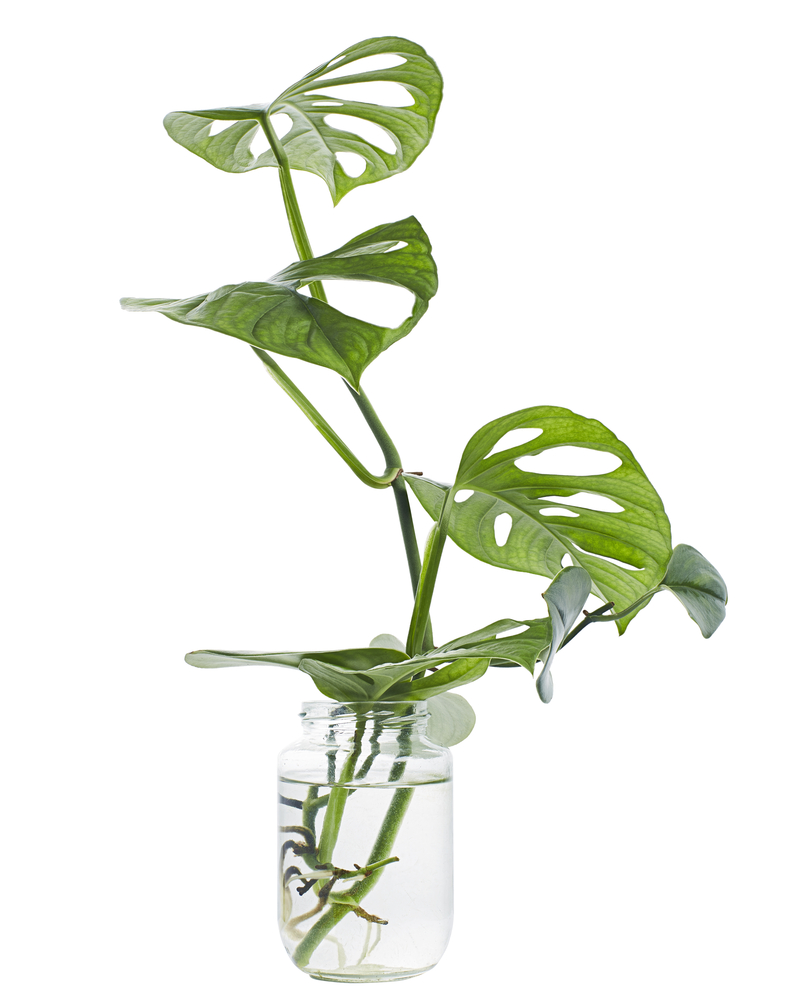
To start, ensure you prepare your growing medium before making your cuts. Prolonged exposure to air will not benefit the delicate flesh of your obliqua, which can become damaged if dried out.
If you’re propagating into soil, prep your planter and aroid soil mix in advance and ensure it’s moist before transplanting your cutting. If you intend to root your Monstera cuttings in water, find a clean, preferably glass container and fill it with fresh water. If you’re using moss, prepare your propagation tray with a damp moss medium of your choice.
For your propagating cuttings, also make sure you have a safe, clean, sunny space for them to grow. This environment needs to be warm and humid and receive a minimum of six to eight hours per day of bright light.
How do I root my obliqua node?
Rooting an obliqua node is easy, provided you have decent cutting. This means a healthy, relatively sized section of stem that contains a minimum of one to three nodes. Nodes are the sections of a plant from which roots and leaves grow and are essential when you’re trying to propagate a Monstera of any type.
Once you have your cutting, you can set it out in your growing medium. Lay the nodes down in the moss, ensuring they are partially covered to absorb moisture from the growing medium. Set your growing tray in a warm, humid spot, and prepare to have some patience as they attempt to make new growth.
To supplement humidity, you can cover your node growing tray with loose plastic to retain moisture or place it near a portable room humidifier. It’s essential that your node cuttings receive as much humidity as possible, as this aids them in cell division, leading to vigorous growth.
Want to see if you can propagate a Monstera without a node? Find out here!
How do I root my obliqua runners?
Runners are cuttings from a plant like a Monstera obliqua that contain shoots or small roots, usually aerial roots. Rooting from runners is a very straightforward process, but as with node cuttings, you’ll achieve the best results if you have a good portion of the plant to begin with.
To root runners in soil, you need to prepare your soil mix and planter in advance and nestle your cutting inside it. Keep your newly planted runner close to bright, indirect light, and make sure its needs are met in terms of water, humidity, and temperature.
To root runners in water, all you need to do is pop them in a container of water and place them close to a source of bright, consistent, but indirect light too. Changing the water once every week will keep it oxygenated, giving your cutting an excellent chance to thrive.
How do you cut a Monstera obliqua?
To cut a Monstera obliqua, always make sure to properly prepare your workstation. Ensure your plant is completely healthy before snipping, or you may cause it distress and end up with subpar cuttings anyway. Then, when you’re ready, make a clean cut below a node, keeping at least one leaf attached.
Cutting an obliqua takes a good amount of care, as the last thing you want is to unintentionally damage your rare and slow-growing plant. How you cut will also directly impact how well your cutting takes to propagation.
Personally, I find making my cuttings for propagation the most daunting part of plant parenting. One wrong move and you could hurt your rare babies without meaning to, and dirty tools can cause bacterial or fungal infections.
To curb this, preparing well helps me know there is minimal risk of something going awry. It’s also good to know where to cut and to plan for it so that you don’t end up chopping your plant for no reason.
Why does Monstera obliqua have holes?
The Monstera obliqua has holes to help protect its leaves in the wild. Specifically, the holes provide an escape through their leaves of pooling water, thereby keeping them safe from drenching rain or water runoffs. Some have also theorized that the holes actually help the leaves catch more sunlight.
This latter point may seem a bit strange, given that you’d assume that the more solid a leaf is, the more real estate there is to absorb the light. But one biologist has claimed that he’s done the math and that leaves with fenestrations are more likely to catch a random ray of light than a whole leaf. For Monsteras that grow beneath the canopy in their natural environments, those random rays of light are how they survive, so perhaps there’s truth to what this person is saying.
It hasn’t been proven yet though, with the far more common belief being the one I mentioned just above. That is, the beautiful Monstera obliqua Peru doesn’t only have fenestrations for the sake of aesthetics. Indeed, they serve a very useful purpose for Monstera obliqua in the wild to help it deal with the heavy rains that come from living in a rainforest.
So if you’ve ever wondered why the Monstera genus have their signature apertures (especially Monstera obliqua Peru which is the most well known of this type of very fenestrated plant), the answer is actually quite sweet. These holes are a protective mechanism for jungle plants dwelling in tropical areas and serve as a clever escape mechanism for excess water caused by rain or floods. This is, of course, just more evidence of exactly how special these beautiful plants really are.
